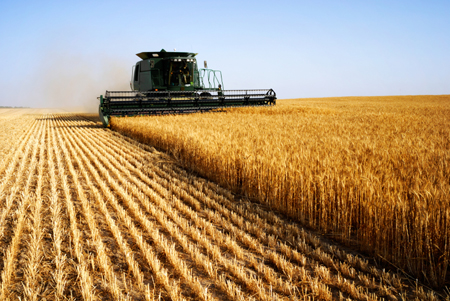The 2012 Farm Bill march to a deal
Category: Policy
 (AgProfessional) – As Congressional leaders and the Obama administration begin their fourth week of deliberations toward a tax and budget deal to avoid the demise of the looming Jan. 1, “fiscal cliff,” the U.S. agriculture industry may soon learn what is to become of a new five-year farm bill. Just this past week, leaders of the House and Senate Agriculture Committees convened to begin working on a deal of potential farm bill cost savings that could be offered to negotiators from both ends of Pennsylvania Avenue for use in any final deficit reduction package.
(AgProfessional) – As Congressional leaders and the Obama administration begin their fourth week of deliberations toward a tax and budget deal to avoid the demise of the looming Jan. 1, “fiscal cliff,” the U.S. agriculture industry may soon learn what is to become of a new five-year farm bill. Just this past week, leaders of the House and Senate Agriculture Committees convened to begin working on a deal of potential farm bill cost savings that could be offered to negotiators from both ends of Pennsylvania Avenue for use in any final deficit reduction package.
The reason for this turn of events is two-fold. The first is that the so-called Gang of Four—Senate Agriculture Committee Chair Debbie Stabenow (D-Mich.) and Ranking Member Pat Robertson (R-Kan.) and House Agriculture Committee Chairman Frank Lucas (R-Okla.) and Ranking Member Collin Peterson (D-Minn.)—are united in moving their respective bills, approved in June by the full Senate and by the House Ag Committee in July, and forging a final compromise bill before the 112th Congress expires. The second reason is that the two bills propose cuts over 10 years to commodity programs and crop insurance subsidies between $23 billion (Senate) and $35 billion (House), very much in line with the White House’s proposed budget cuts for farm programs of $32 billion announced last February. Interestingly, the numbers also fall in line with what House Budget Committee Chairman and recent Vice Presidential nominee Paul Ryan has proposed. Having a bipartisan, ready-made built-in package of deficit cuts for the offing would have to be included in any overall fiscal package that could be agreed to.
That committee leaders are meeting in earnest on the general cost savings parameters of a new farm bill strictly on their own, according to inside accounts, suggests there is hope for success on the bigger budget and tax deal. However, the House GOP leadership has given no hints they are willing to consider the farm bill in the remaining three weeks of the year. For starters, there probably isn’t enough legislative floor time to work through a bill as large and controversial as the farm bill, especially under regular order, as called for by Speaker Boehner and Majority Leader Cantor. Both bills are far apart on treatment of commodities and target prices. The Senate bill provides for new crop insurance options called the “shallow loss program” supported by corn and soybean producers from the Midwest. But Southern producers of peanuts, rice and wheat are not happy with that coverage and strongly prefer the House bill, which keeps traditional target price options for producers.
Getting House and Senate negotiators come to common ground on this major issue is far from certain. Moreover, House leaders maintain there are not enough Republican votes to pass such a bill solely over the level of proposed cuts to the Supplemental Nutritional Assistance Program (SNAP) known as food stamps. A solid majority of the Republican rank and file wishes to see even deeper cuts to the $16 billion in proposed cuts in the House Committee-passed bill. The Senate bill contains proposed cuts of $4 billion and Senator Stabenow went on record last week saying she could not accept any more cuts to Food stamps. Even reconciling a final House bill with the Senate-passed measure would be a tall order in the time remaining before Christmas. At this point, everything is on the table and the four negotiators continue to suggest they open to concessions large and small.
For now, the plausible and likely scenario is for a one-year extension of the 2008 bill, with a commitment by committee leaders to complete a new five-year farm bill with specific deficit reduction targets in 2013. Although Stabenow and Peterson remain firmly opposed to any form of extension, they recognize they may have no choice. An extension will have to address programs that actually expire on Dec. 31, such as current dairy policy, in order that milk prices don’t spike based on reverting to the “permanent” 1949 Farm Bill law. Some have called this the farm bill “cliff” if no new farm bill is enacted or current law is not extended. One important addition that will likely be included in an extension that both sides can agree on is funding for new drought disaster relief that failed to get enacted in September.
If nothing else, the fiscal cliff and the current down-to-the-wire negotiations by the speaker and the president have brought the Farm Bill Four together in a way that no one anticipated, especially given the fact the House has not formally considered it’s version of the 2012 Farm Bill. By necessity and considering the ramifications the budget savings presented in the competing House and Senate bills may have for a deal to avert the fiscal cliff, both sides are already conferencing a grand bargain for new U.S. farm policy in 2013.




